
On March 17th, Irish communities across the globe throw one of the worldʻs rowdiest parties in honor of the country’s patron saint, but the man we celebrate with shamrocks and green beer lived a life far stranger, darker, and more unlikely than images of the bearded apostle suggest. Pirates, slavery, visions, and druids are just a few of the ingredients in his improbable saga, which sees the man likely born Maewyn Succat in Roman-controlled Britain kidnapped, brought to Ireland, and kept captive as a shepherd — all in the first few chapters.
I learn all this through Patrick’s own words in an immersive multimedia experience at the Saint Patrick Centre in Downpatrick, Northern Ireland, which opened in 2023 and brings his story to life in a swirl of light, sound, and video. “Imagine having a voice from the 400s, and that’s what we’ve got,” says Tim Campbell, executive director of the Centre, the world’s only permanent exhibit about the saint. “Patrick actually provides us with the script for this exhibit, telling us all about himself from his comfortable childhood to his escape, to his visions and beliefs.”

This was possible because, as the educated son of a Catholic cleric, Patrick had learned to write, unlike most Irish of the time. What emerges from his two short works, Confession and Letter to Coroticus, as well as other contemporary accounts, is a Dickensian nail-biter in which the enslaved shepherd boy hears voices urging him to escape, flees on foot over 200 miles, and hitchhikes off the island with the help of renegade sailors, only to end up shipwrecked somewhere off the coast of France. “They start to starve and pray to their pagan god, but nothing happens,” Campbell says. “So they say to Patrick, `You’ve got that strange Christian God of yours, why don’t you pray to Him?’ And Patrick prays and a herd of pigs appear, and ooh-la-la, ooh-la-la, they’re much impressed and decide to convert.”
Reunited with his family, Patrick lived peacefully back in Britain and became an ordained priest, only to return to the site of his enslavement when another series of visions urged him to bring salvation to his former captors. Quickly winning converts, he rose in prominence and authority, establishing numerous churches including what is today the Down Cathedral, where he died on March 17, 461, and is thought to be buried. Visions and miracles continued to be his stock in trade; legends describe magical displays of righteous authority, including a contest in which he bested the Celtic druids with flashes of fire.
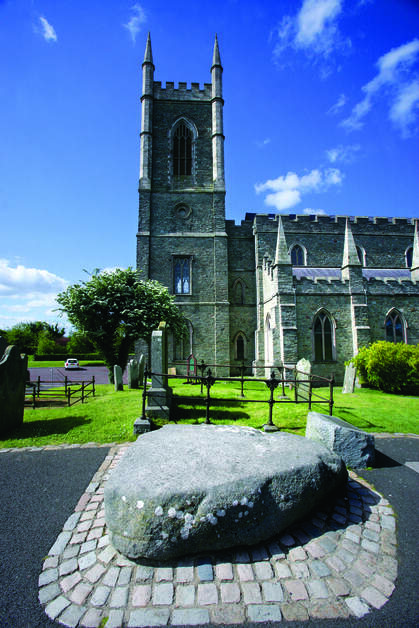
He also used his growing power against a practice whose evils he knew from firsthand experience: slavery. Describing it as “wicked, so horrible, so unutterable,” he excoriated slave owners and traders and by the end of his lifetime had ended the Irish slave trade.
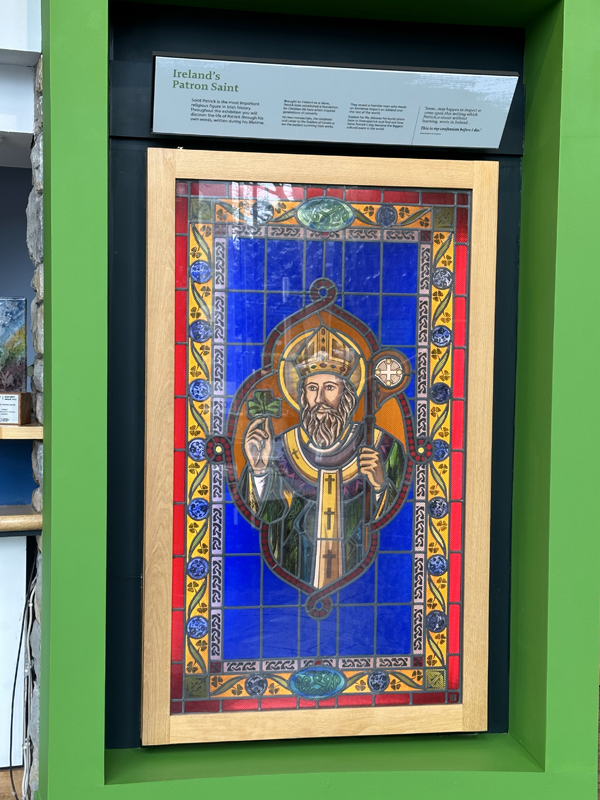
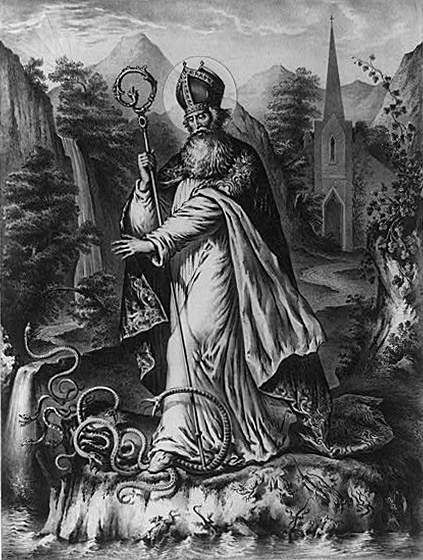
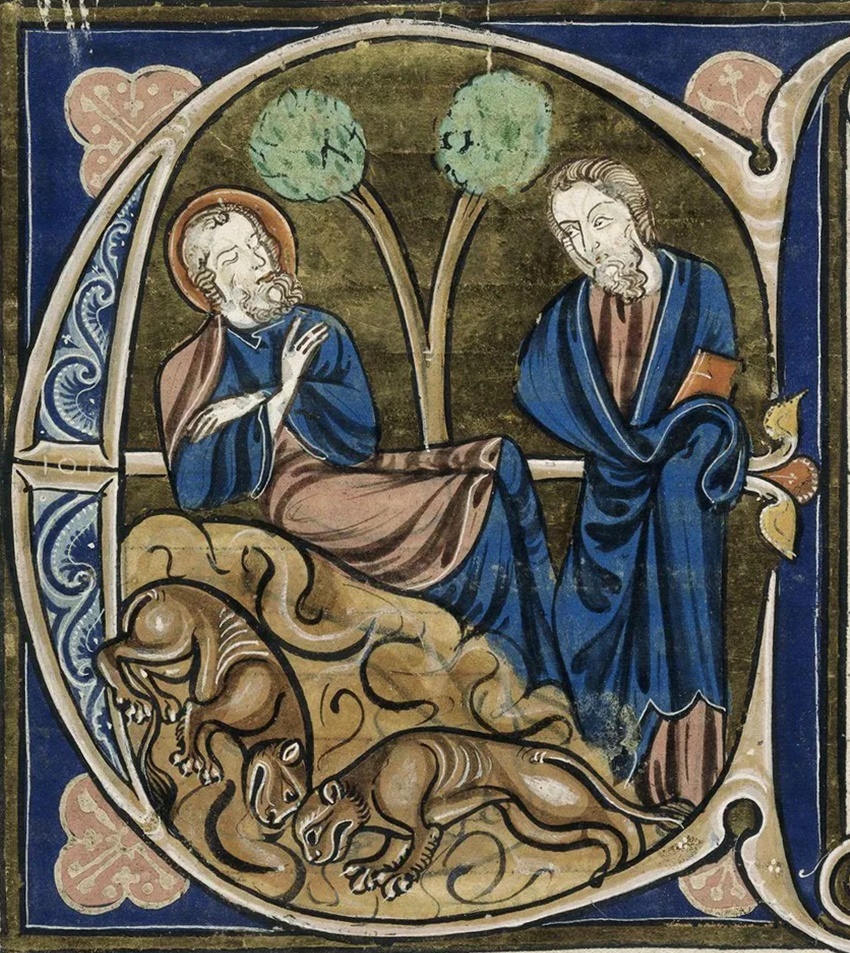
“There are so many modern things to his story, things we’re interested in today,” Campbell says. “Human trafficking is one, his relationship with women is another – he was very comfortable with baptizing and ordaining women at a time when many of the early saints would not. It’s a redemption story, too, as he chooses to return to Ireland after he fled as a slave. And then, of course, there’s the fact he was kidnapped by pirates – people love pirates.”
Perhaps because of his early traumas, the apostle was also known for charitable works, a tradition the Saint Patrick Centre continues, running a day shelter and providing meals and services for seniors. “Millions and millions of people celebrate Saint Patrick’s Day in America, and many of them got there because of hunger and homelessness,” Campbell says. “So what I say to American visitors is, if you’re here to celebrate where you came from, and really honor your ancestors, surely it shouldn’t be by marching past people who are hungry and homeless on the street?”
In fact, the history of Saint Patrick’s Day in the U.S. is almost as convoluted as the saint’s life. Take the fact that the first parade held in honor of Saint Patrick’s Day took place in a Spanish (Catholic) colony in what today is St. Augustine, Florida. The now-famous celebration in Boston was initiated in 1737 by Protestants who treated it as a celebration of Irish culture, conveniently overlooking the religious affiliation.
Here in Northern Ireland, where Downpatrick is located, celebrating Saint Patrick with public festivities is a relatively recent affair. Recognized and at times claimed by both Catholicism and the Anglican Church of Ireland, the saint was a flashpoint for Catholic-Protestant conflict during the Troubles, when Protestants shunned the celebration and went so far as to institute a separate holiday, Orangemen’s Day, celebrating the country’s conquest by England. But today Saint Patrick’s Day festivities take place in Northern Ireland, including Belfast’s Saint Patrick’s Day Parade, which is accompanied by a week-long music festival.
Tourism related to St, Patrick has also boomed, with many visiting Downpatrick as part of a larger pilgrimage following the 82-mile Saint Patrick’s Way, which connects a string of Northern Ireland’s most significant religious and historic sites and culminates at the saint’s grave. Passports, available at visitor’s centers, provide information on each of the signed stops, and pilgrims are issued a certificate of achievement commemorating their journey.
While the real Saint Patrick may have racked up some seriously significant accomplishments, it’s what he didn’t do that contains some of the biggest surprises. Pointing at a typical painting of the saint, Campbell says: “Here we see him, as we often do, dressed in green, holding a shamrock, and standing in front of a snake. But none of those things are true.”
Let’s take the snakes, which Saint Patrick is credited with banishing from Ireland. “We know now there haven’t been any snakes in Ireland for 10,000 years,” Campbell laughs. The legend that Saint Patrick used the shamrock to teach converts about the Trinity likewise has no basis in fact.
In perhaps the final irony, even the wearing of the green, the most basic of Saint Patrick’s Day rites, has little to do with Ireland’s apostle. “Green is the emigrants’ view, looking back at the Emerald Isle, but the color originally associated with Saint Patrick was blue,” says Campbell, noting that the earliest depictions of the saint show him in robes of blue, not green. To this day, the official color of the chivalric Order of Saint Patrick is sky blue.
And those pubs full of rowdy over-imbibers? That’s a recent development, too. In fact, alcohol was illegal and pubs were closed on the saint’s day into the early 1970s. The actual way the saint was honored says Campbell: “It was a day of prayer, reflection, and abstinence.”
Become a Saturday Evening Post member and enjoy unlimited access. Subscribe now
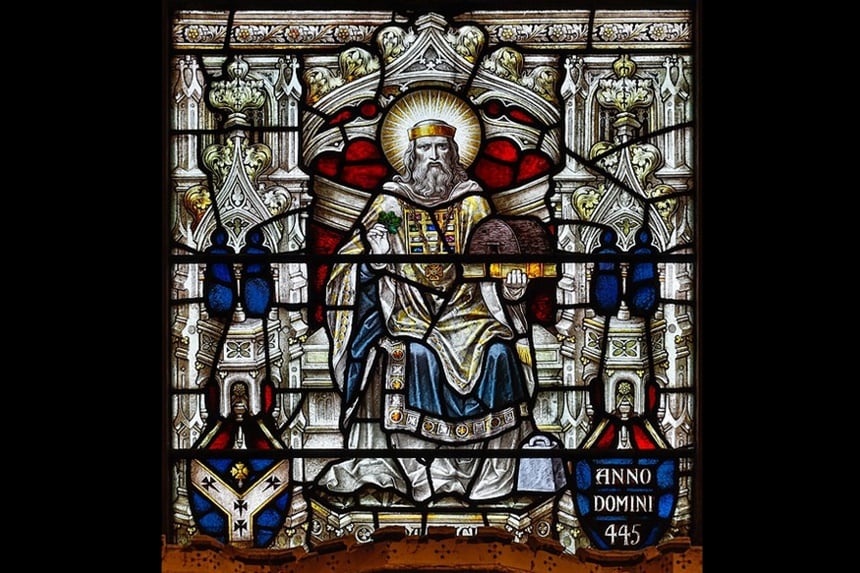



Comments
I got a shamrock pin as a gift that has a white cross in the middle of it to represent the holy trinity. I wore black leggings with green shamrocks printed on them. Oh well and to find out that St. Patrick did not drive the snakes out of island is grand to know. I will let everyone know about this article for sure. Thank you Saturday Evening Post for the story.
Thank you Ms. Haiken for this article setting things straight on St. Patrick. I agree with both Marilyn and Midnight_Rider’s comments. Using it as a get-drunk-day IS reprehensible and disrespectful to his memory. I wish it could be stopped too. As far as what’s wrong with people in these times, it’s nearly EVERYTHING unfortunately!
St Patrick was a godly man.. He introduced the Holy Trinity to the Irish & whether he used a shamrock as a prop is irrelevant.. He helped make a difference and is remembered and revered – whether he wore green or blue. A man that is celebrated from the 400’s must have made a positive impact – & done something right. Just enjoy the day and leave all the details to the Ages…
I had heard much of what you article said about St Patrick before, and based on my research it was spot on! On another note: I believe the practice of over-indulgence in alcohol to celebrate his day is reprehensible and disrespectful to his memory and should be stopped. That’s all I’ll say about that. What is wrong with people?
Interesting stories
A DNA check confirmed I’m almost completely Irish, but with a touch of Neanderthal. When is Neanderthal Day?